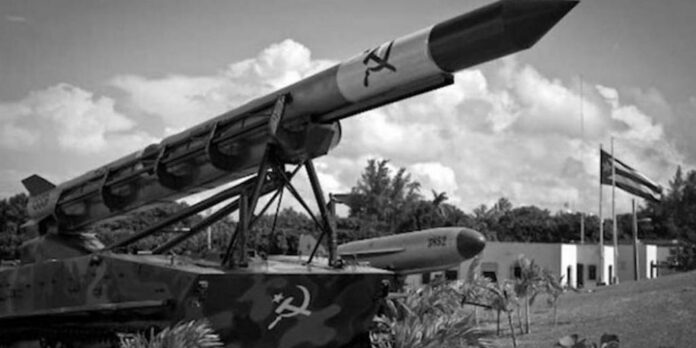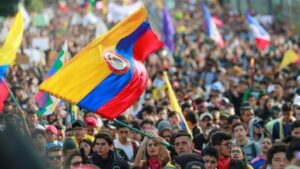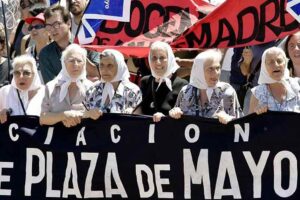The causes, consequences and lessons of the October Crisis, a diplomatic conflict between the United States, the now defunct Soviet Union and Cuba in 1962, reappear on the table in the face of new dangers and nuclear threats.
At that time, the USSR decided to place missiles on the island to defend itself against an imminent US invasion and, after a negotiation process between Soviet leader Nikita Khrushchev and President John F. Kennedy, the arsenal left the Caribbean nation.
However, Hassan Pérez Casabona, PhD in Historical Sciences and professor at the Center for Hemispheric and U.S. Studies (Cehseu) of the University of Havana, told this reporter that today’s world is not marked by two poles, as it was six decades ago.
In his opinion, we are experiencing a broad and prolonged process of re-composition and reconfiguration of international relations, «in which no actor can play its own game to the detriment of the rest», although Washington sets, as in those days, the standard in military matters.
The academic pointed out that the White House allocates approximately 40 percent of its annual expenditure to this sphere and, although it continues to be the main power on a global scale, since the 1970s, with the defeat in Vietnam, it has experienced «an unquestionable process of hegemonic decline».
Russia, on the other hand, is at the forefront in areas such as strategic rocketry and anti-aircraft defense and China, a Socialist and People’s Republic, has been emerging as an economic giant for several years now, with real possibilities of displacing the United States from first place.
Another of the lessons learned from those events of 1962 is the union of small nations as «the only way for their proposals and aspirations to be taken into account», based on the articulation of common positions within the complex foreign panorama.
In addition, Pérez Casabona commented, «we must not cease to seek channels of dialogue for the resolution of conflicts, without renouncing aspects considered to be fundamental; we must integrate and work on new and creative forms of association and cooperation».
NUCLEAR THREAT?
According to René González Barrios, director of the Fidel Castro Ruz Center and former president of the Institute of Cuban History, the reflection now involves considerations such as the increase in arms power and the number of countries with nuclear weapons.
The United Nations (UN) reports that there are around 22,000 of them in the world and, to date, more than 2,000 nuclear tests have taken place, although history recognizes only two moments of their use: the bombing of the Japanese cities of Hiroshima and Nagasaki in 1945.
«The money allocated each year to the military sector would be more profitable in fields such as medicine, climate change control and combating increasingly catastrophic natural phenomena. We live in constant danger of any pretext triggering an atomic conflagration,» he said.
González Barrios added that this threat is greater when irresponsible politicians assume the government of countries such as the United States and feelings of admiration for extreme right-wing nationalism and fascist ideas are reborn in many territories.
Undoubtedly, contemporary fears of a situation similar to the October Crisis, which brought humanity to the brink of a third world war, are a response to Russia’s military operation in Ukraine, although equivalent tensions are also emerging in other geographical areas.
In this sense, Fabian Escalante, retired major general and former head of the intelligence services in the Caribbean nation, recently alluded to the efforts of the West, the White House and the North Atlantic Treaty Organization (NATO) to encircle the Eurasian nation in order to divide and annihilate it.
The author of books such as The Secret War: Operation Calypso and Beyond Reasonable Doubt. The Kennedy Assassination and the Framing of Cuba, acknowledged Moscow’s efforts in the Minsk Agreements, considered the only chance for a diplomatic solution to the conflict in Donbas.
DECLASSIFIED DOCUMENTS
For Tomás Diez Acosta, retired lieutenant colonel of the Revolutionary Armed Forces (FAR), with a degree in Political Sciences and a doctorate in Historical Sciences, this was the most dangerous event of the so-called Cold War due to the confrontation between the two main powers of the time.
In declarations to this journalist, the expert recalled that it was not a fight with conventional weapons, since it involved the use of nuclear rockets, «in an unprecedented event in the history of the North American country due to the proximity of Soviet missiles to its territory».
It would also involve the members of the Treaty of Friendship, Cooperation and Mutual Assistance, known as the Warsaw Pact, and NATO, although Washington only verified that year the presence on the island of means of delivery.
«They knew with certainty about nuclear weapons at the 1989 tripartite conference held in Moscow, which had had previous meetings in the Florida Keys in March 1987, with the participation of high-ranking officials of the Kennedy administration,» he said.
That meeting in the USSR was attended by a Cuban delegation headed by Jorge Risquet; several academics, including Rafael Hernández, current director of Temas magazine, and the Central Committee of the Communist Party of Cuba, experts in relations between Havana and Washington.
During the meeting, former U.S. Secretary of Defense Robert McNamara said about the clear evidence of a possible incursion, organized from the White House to the island in the 1960s: «if I were a Cuban leader, I would have thought that the United States was preparing the invasion».
The National Security Archive, an academic center located in Washington and dedicated for more than three decades to the study of the October Crisis, achieved the declassification of thousands of documents associated with those events and the previous plan of destabilizing actions.
Driven by the Central Intelligence Agency and the State Department, the strategy devised after the defeat of Playa Girón in April 1961, aimed at the overthrow of the revolutionary government through pretexts such as the real or simulated sinking of a ship loaded with Cuban refugees on their way to Florida.
«They conceived such Machiavellian actions as Operation Northwoods. The U.S. administration considered that by mid-1962 there would already exist in Cuba a process of softening or a situation of chaos that would allow a direct military intervention,» historian Elier Ramirez told Prensa Latina.
In that scenario, leader Fidel Castro received Moscow’s proposal for the installation of nuclear rockets in his territory and, for 76 days, the island received several regiments of medium and intermediate range missiles, around 41 thousand soldiers, airplanes, tanks and motorized infantry.
The Archive also revealed that the Crisis covers from October 4, 1962, when the armament arrived at the port of Mariel, today’s Artemisa province, on the ship Indigirka, until December 1 of that year, the date of the departure of the ship Arkhangelsk with the nuclear warheads on board.




